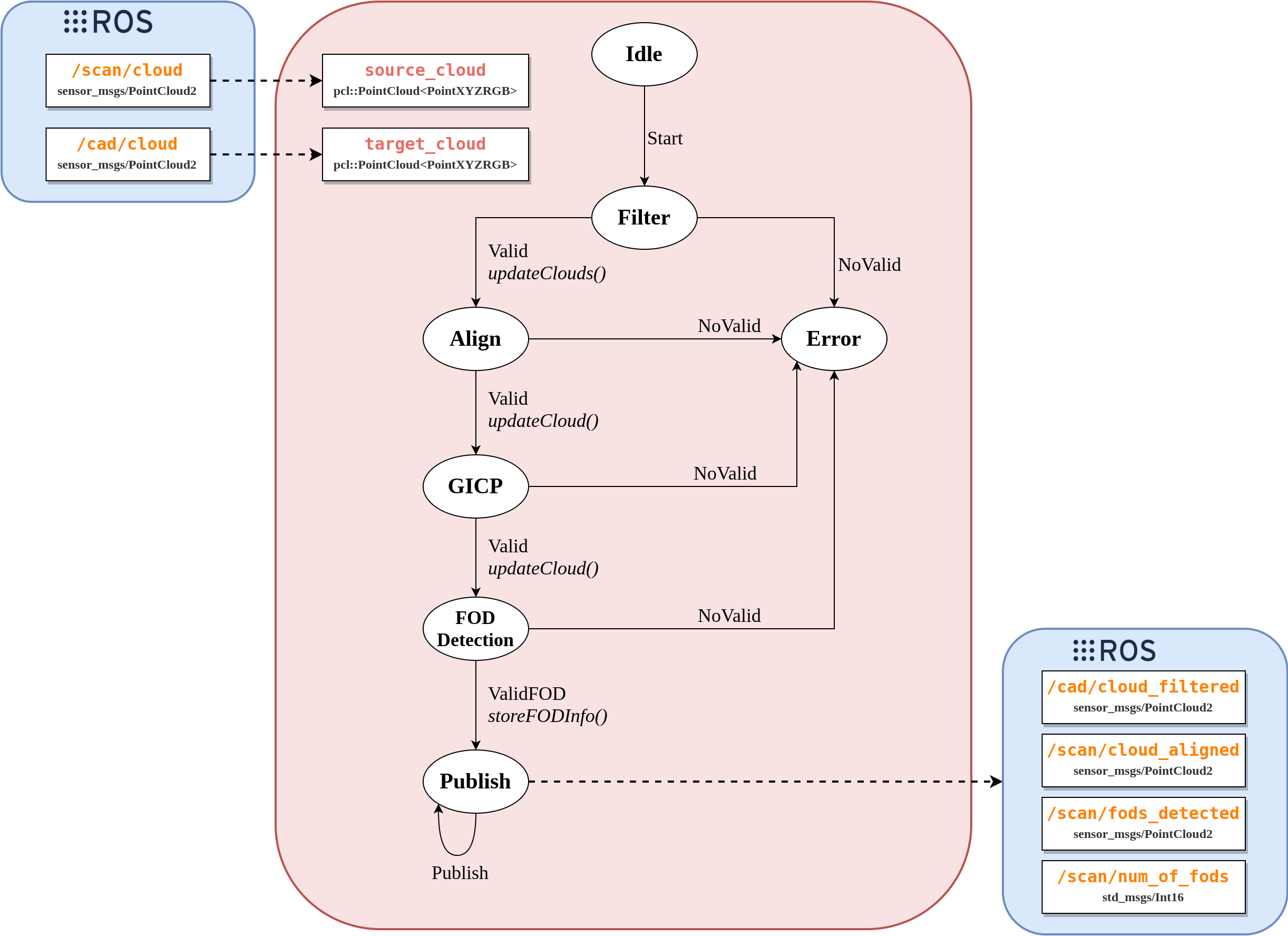Show EOL distros:
Package Summary
The leica_point_cloud_processing package provides an algorithm to perform point cloud registration from Leica ScanStation device and helps identifying FODs in huge aeronautical structures.
- Maintainer status: maintained
- Maintainer: Ines Lara Sicilia <imlara AT catec DOT aero>
- Author: Ines Lara Sicilia <imlara AT catec DOT aero>
- License: Apache 2.0
- Source: git https://github.com/fada-catec/leica_point_cloud_processing.git (branch: master)
Package Summary
The leica_point_cloud_processing package provides an algorithm to perform point cloud registration from Leica ScanStation device and helps identifying FODs in huge aeronautical structures.
- Maintainer status: maintained
- Maintainer: Ines Lara Sicilia <imlara AT catec DOT aero>
- Author: Ines Lara Sicilia <imlara AT catec DOT aero>
- License: Apache 2.0
- Source: git https://github.com/fada-catec/leica_point_cloud_processing.git (branch: master)
Contents
Overview
In the aerospace industry, FODs are a recurrent problem that implies a high risk. This package has been developed to help identifying FODs in aeronautical structures.
Using point cloud analysis techniques, this software aims to compare the current state of the structure with previous state to identify possible foreign objects. It opens up the posibility of applying a pre-scan in which it is guaranteed to be free of FODs or a CAD of the structure that is ideal and free of fods.
Getting started
Source: git https://github.com/fada-catec/leica_point_cloud_processing (branch: master)
This package have been designed to be used in combination with the leica_scanstation package, which allows to control the scanstation to scan an aeronautical part. When the scan is finished, you get the point cloud that proceeds to be analyzed. In order to reproduce this behaviour if the device is not available, we created a simulator.
However, it is possible to feed this program with pointclouds from other sources and it will run the same way.
NOTE: you will need leica_scanstation_msgs and leica_scanstation_utils packages from leica_scanstation to use this one.
Workflow
The aim is to compare two pointclouds: the one obtained after scanning with the Leica Scanstation, with an ideal one free of FODs. This second cloud can be from a previous scan or the CAD of the structure. The first stage is to get both clouds registerd as exposed in PCL Registration API. When FOD detection process ends, results clouds are available in ROS topics.
This proccedure is developed as a Finite State Machine. The worklow is the following.

Usage
Publish clouds
load_and_publish_clouds node will load both source and target clouds into ROS environment.
rosrun leica_point_cloud_processing load_and_publish_clouds
Considerations:
Make sure pointcloud files are on the correct folder, specified in ROS param server as /pointcloud_folder (default: package leica_scanstation_utils/pointclouds).
Supported formats: .obj and .ply for CAD files and .pcd for scanned files.
Publisher starts when service /publish_clouds is called: automatically done by leica_scanstation_ros_node when scan is finished or manually by user:
rosservice call /publish_clouds "source_cloud_file: 'scan_fods.pcd' target_cloud_file: 'cad.ply'"
Start process
node is the main node that perform alignment and FOD detection. It opens subscribers to clouds topics and start process. As the target cloud indicated in example above comes from a CAD file, set param using_CAD to true.
roslaunch leica_point_cloud_processing leica_point_cloud_processing.launch using_CAD:=true
ROS API
Topics
target/cloud (sensor_msgs/PointCloud2)
- Point cloud created from loading Part's CAD or scan free of FODs.
- Point cloud obtained from loading the result of a scanning process.
- Target Point cloud after downsampling.
- Point cloud resulting of the aligned cloud.
- Number of FODs detected in cloud
- FODs presented as point cloud.
Services
publish_clouds (leica_scanstation_msgs/PointCloudFile)
- Tell which pointcloud file to publish into ROS environment.
Parameters
/using_CAD (bool, default: false)
- Set to true if target cloud is a CAD.
- Harris=0, Boundary=1, Multiscale=2, Normals=3, None=4.
Acknowledgement

Supported by ROSIN - ROS-Industrial Quality-Assured Robot Software Components.
More information: rosin-project.eu
|
This project has received funding from the European Union’s Horizon 2020 |







